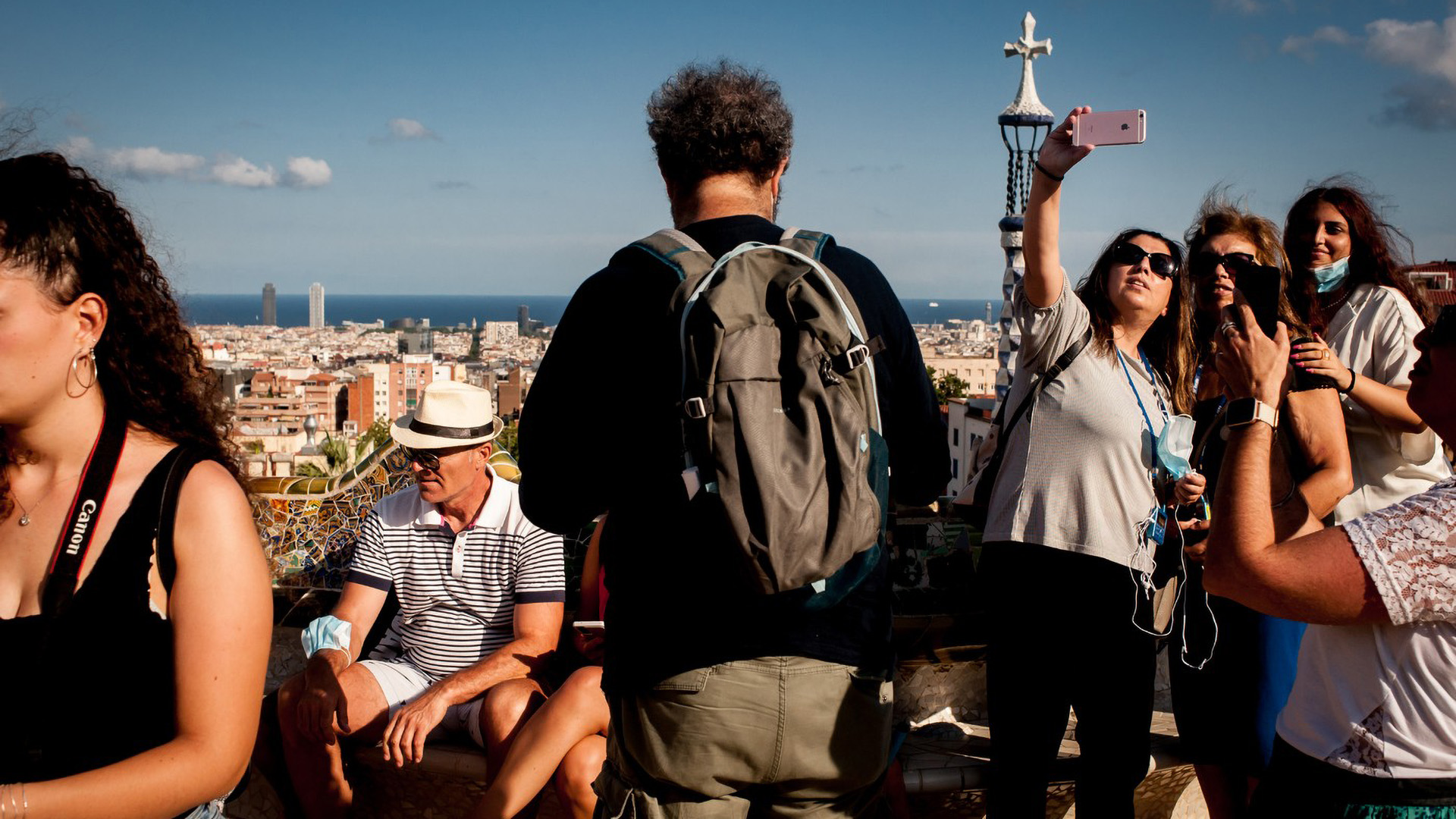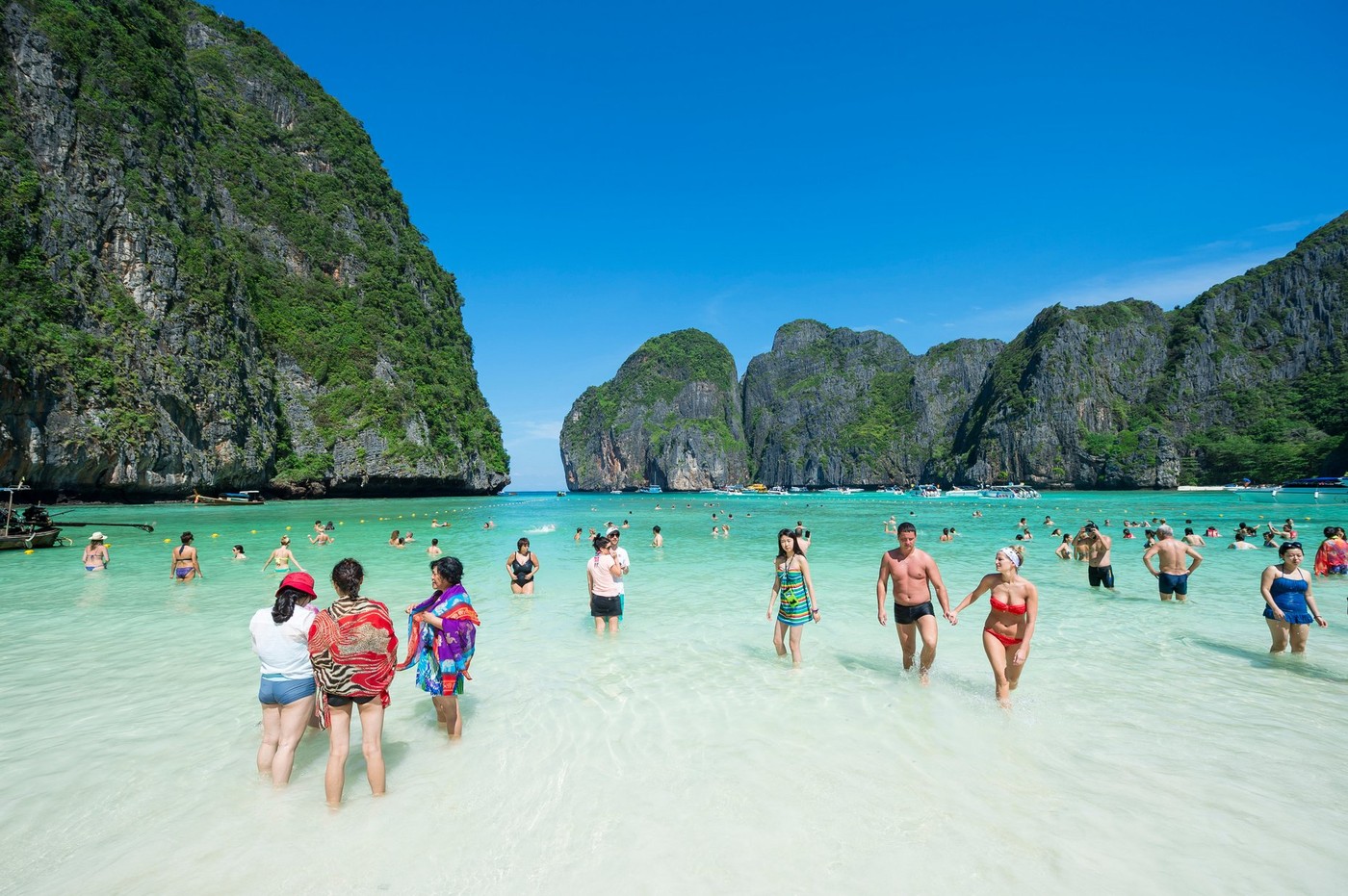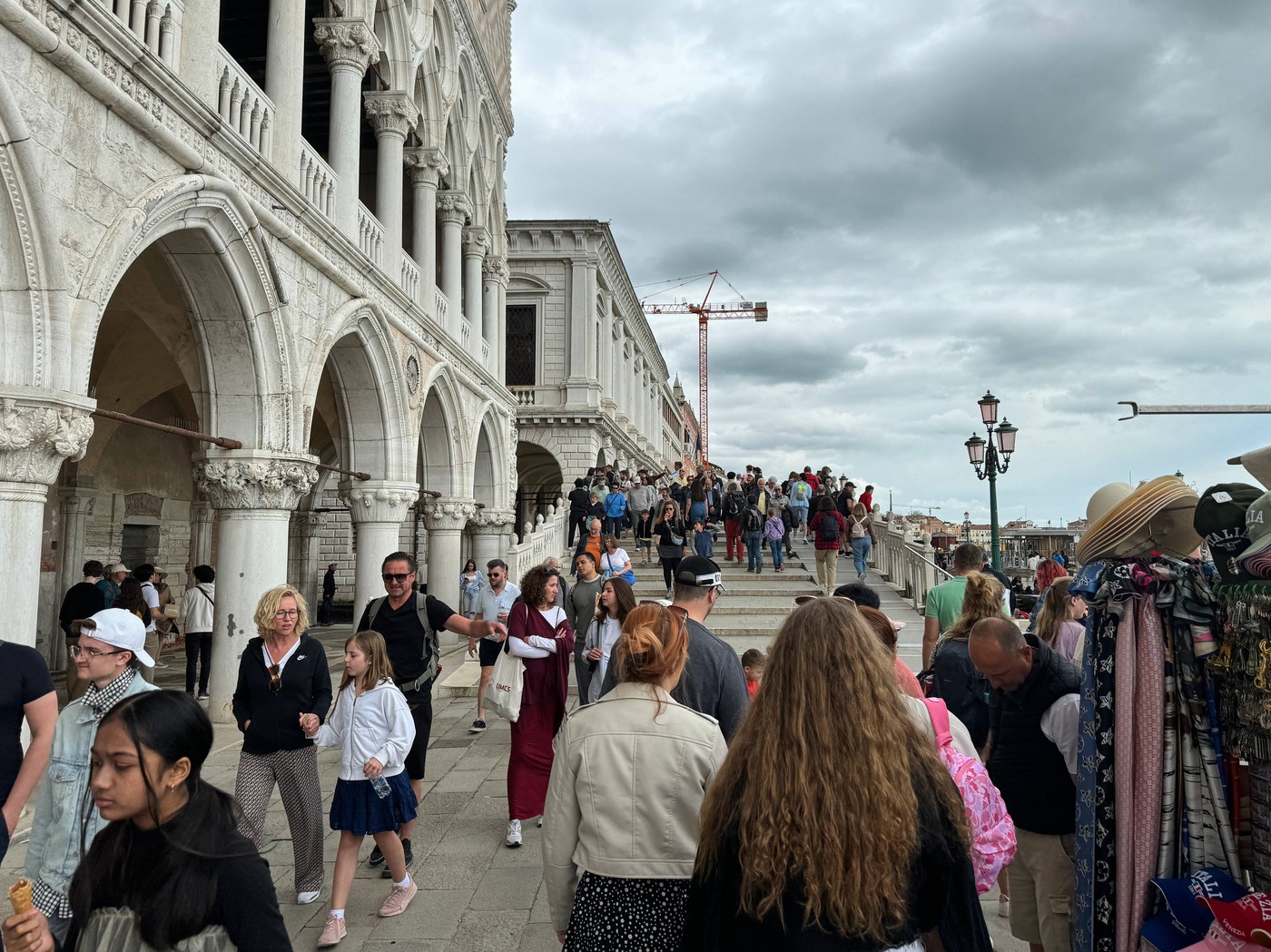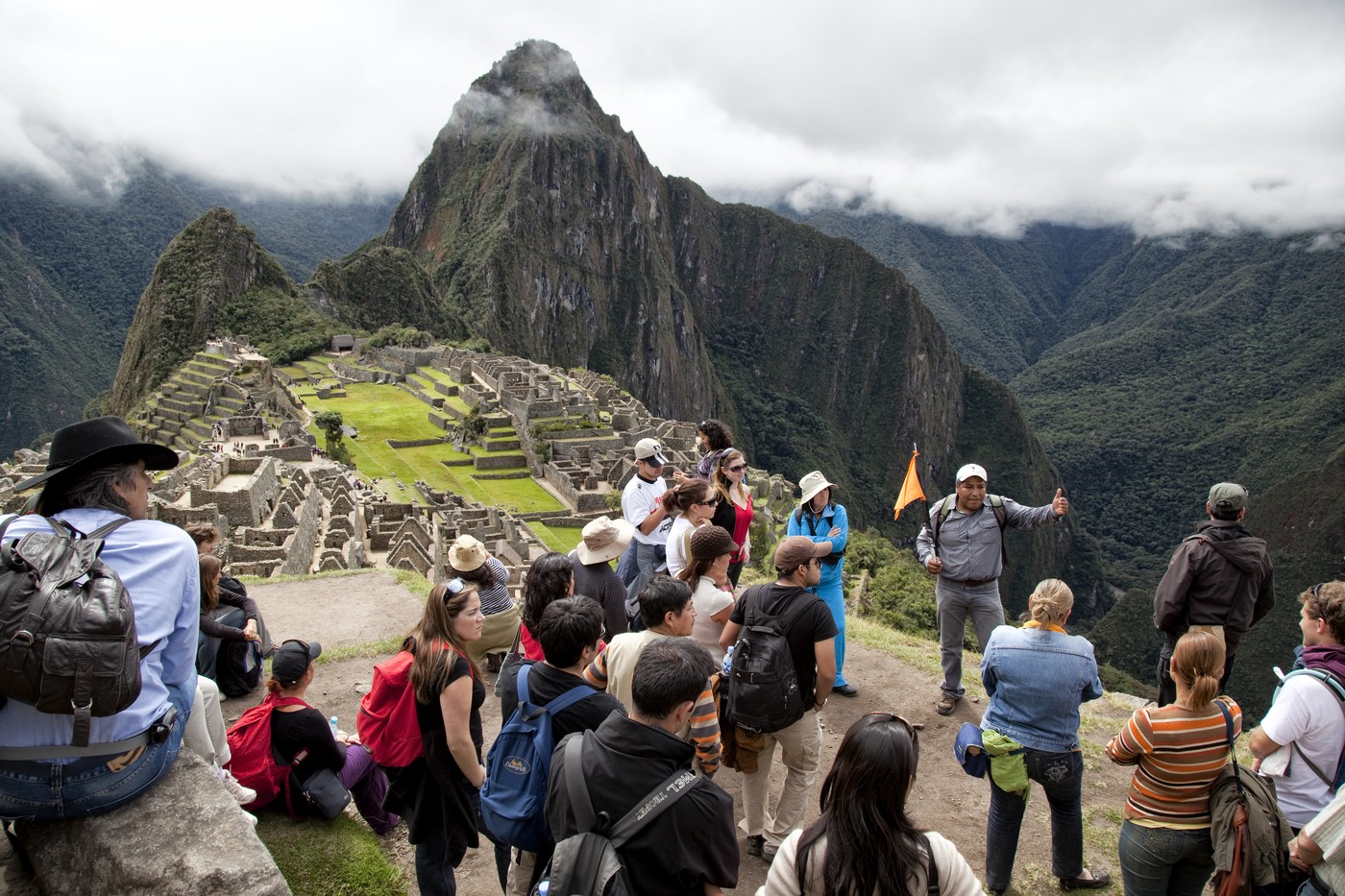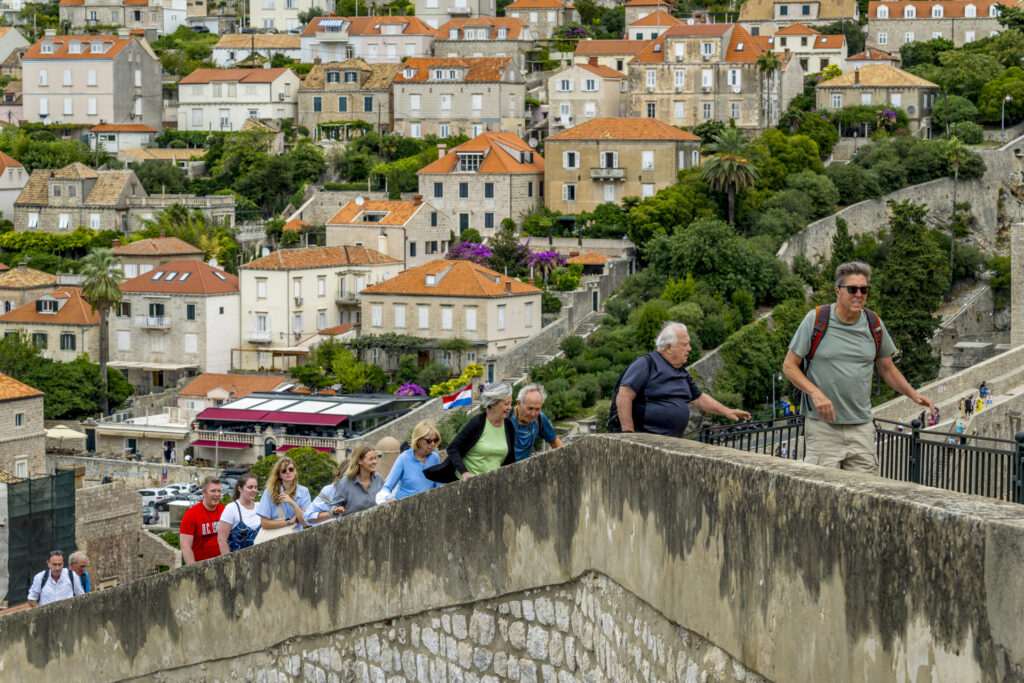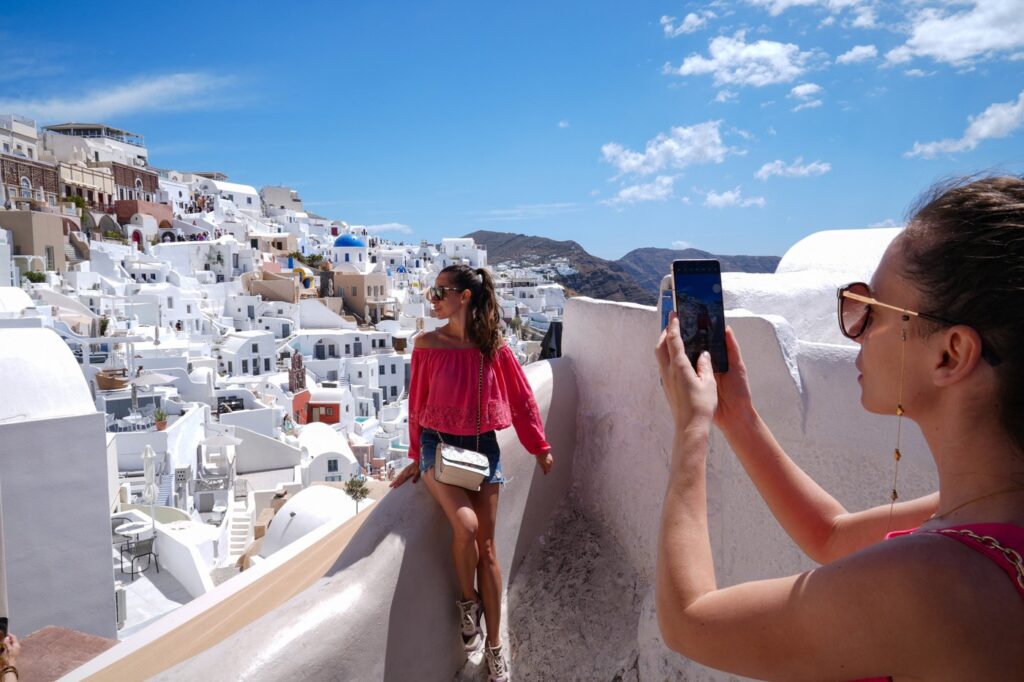Cheap plane tickets, social media, movies, Netflix series… all contribute to the fact that the following cities have to deal with an increasing influx of tourists every year.
Just a few days ago, it was reported that residents of a small town in Japan had to cover their view of Mount Fuji to get rid of the crowds of tourists that were suffocating them.
In Japan, Shizuoka Prefecture is home to the country's highest mountains and one of its most iconic. However, one nearby viewing point, where tourists often stop to take photos, became so crowded that they had to take measures to accommodate local residents. Authorities have erected a barrier blocking the view of Fuji, encouraging tourists to visit other, less crowded areas, reducing pressure on the local ecosystem. Locals living near the lookout point have often complained about the noise and traffic congestion caused by tourists. The biggest problem was the garbage left behind, encroachment on private land, and trampling of plants.
But you can also hear about other cases when the curious simply stop traffic in certain places in order to take the long-awaited photo. As our colleague Chapa tells us, in San Francisco, for example, the tram stops between the two stations and then opens the doors so that tourists can enjoy the well-known view of the hill and the bay from the films, thus blocking traffic in a life-threatening way.
Here are 7 other places in the world where locust-sized tourism sanctions had to be imposed:
Maya bai
Maya Bay (Photo: Promedia)
It was released in cinemas in 2000 Al Jazeera A film starring Leonardo DiCaprio, set in a beautiful, untouched bay. The film's filming location is located on Phi Phi Leh Island in Thailand Maya bai Which gained great popularity after the movie. Thanks to cinema, Maya Bay has become one of the most popular tourist destinations in Thailand. Thousands of visitors each year cause a huge environmental burden. Motorboats transporting tourists damaged coral reefs, and waste management was not properly addressed, leading to serious environmental pollution. The large number of tourists and their activities have also disturbed the local ecosystem. They noticed that turtles, for example, were returning less and less to the island to lay eggs due to excessive noise and the changing environment.
In 2018, the Thai authorities decided to temporarily close Maya Bay to tourists. The purpose of the closure was to give nature a chance to regenerate. Many measures have been taken during the lockdown. Coral farming programs were launched to restore damaged reefs, and daily visitor limits and time limits were set. Since the reopening, authorities have placed greater emphasis on sustainable tourism, ensuring visitor numbers and activities are regulated in a way that does not harm the environment.
Venice
In 2023, Venice introduced an entrance fee for tourists arriving daily. According to the new rules, visitors who do not stay overnight in the city but want to see Venice must pay an entrance fee. The amount of the fee varies depending on the number of visitors and the season, and is intended to reduce the number of tourists coming to the city. Italian authorities have banned the entry of large cruise ships in 2021 Venice To its historical center. These vessels caused severe damage to the lake's ecosystem and building foundations, and caused excessive traffic and congestion. Boats now dock at ports outside the city, bringing tourists in smaller vehicles. Due to traffic congestion and chaos caused by tourist buses, bus routes have also been removed from tourist maps. The move aims to reduce overcrowding in certain parts of the city and encourage visitors to explore the city on foot or by other more sustainable means of transportation. At popular Venice attractions, such as St. Mark's Square and the Doge's Palace, the number of visitors was limited. These sites can be visited with timed tickets.
Barcelona, Park Guell
Barcelona, Park Güell (Photo: Profimedia)
Barcelona is famous Park JoelDesigned by Antoni Gaudi, it is one of the most popular tourist destinations. In recent years, the number of visitors to the park has increased to such an extent that local authorities have had to take various measures to protect the site. One of these measures was to remove bus routes to the park from tourist maps. In addition, a daily limit on the number of visitors has been set to avoid overcrowding and to preserve the condition of the park, and some parts can only be visited with a ticket.
Machu Picchu
Machu Picchu (Photo: Profimedia)
Machu Picchu, the lost city of the Incas, is considered one of the most important tourist attractions in Peru. However, the huge number of tourists poses serious challenges to the World Heritage Site. Machu Picchu It was not originally designed to receive so many visitors. The maximum number of daily visitors set by UNESCO (2,500 people) was often exceeded, meaning a serious burden on the infrastructure and ecosystem. Due to the influx of tourists, soil erosion and compaction have increased significantly, threatening the stability of the area. Although most of them treat the place with respect, they unfortunately leave behind a lot of trash. Although rare, vandalism also occurs, causing irreparable damage.
Dubrovnik
Tourists in Dubrovnik's Old Town (Photo: Wolfgang Kahler/LightRocket via Getty Images)
DubrovnikA UNESCO World Heritage Site, it has seen a significant increase in tourists, mainly due to the popularity of the Game of Thrones series. Therefore, the Croatian authorities have taken a number of measures to regulate tourism. It has introduced daily visitor limits, particularly during the summer months when visitor numbers are at their highest. Following a UNESCO recommendation, the city allows up to 8,000 visitors per day into the historic city centre. An entrance fee has been charged for entry, which not only helps in controlling the number of tourists, but the amounts collected from it are used for the maintenance of the city and the development of sustainable tourism. Entrance ticket must be purchased in advance. This system helps avoid overcrowding. City authorities also restricted the docking of large cruise ships.
Santorini
Santorini Island (Photo: Profimedia)
Santorini, the beautiful Greek island, attracts more and more tourists every year, especially during the summer months. However, overtourism poses serious challenges to the island, including environmental stress, redundant infrastructure, and a deteriorating quality of life for local communities. Santorini Its authorities have limited the number of visitors that ships can dock at one time to reduce overcrowding. A maximum of 8,000 visitors per day are allowed from cruise ships, which is fewer than in previous years. They encourage sustainable transport solutions within the island, and this includes supporting the use of buses and electric bikes and promoting car-sharing services. Some of the island's popular attractions, such as its famous sunsets and archaeological sites, require advance reservations. Tourism revenues are used to support local communities, including cultural programmes, local economic development and financing environmental projects. This helps ensure that the benefits of tourism reach local people.
Hawaii
Honolulu, Hawaii (Photo: Profimedia)
Hawaii Tourism means significant economic income, but in order to manage the influx of tourists, they had to introduce many measures. Excessive pressure from visitors damages sensitive ecosystems, including coral reefs, beaches and nature reserves. Due to the rise in real estate prices due to tourism, the quality of life of local residents deteriorates and many are forced to leave their homes. Often, visitors do not respect local traditions and cultural sites, leading to conflicts with local residents. Many popular tourist attractions, such as Hanauma Bay Nature Reserve, have introduced entrance fees and advance reservation systems to control visitor numbers and protect the environment. The government issued regulations to limit the increase in real estate prices and provide housing for local residents.








































